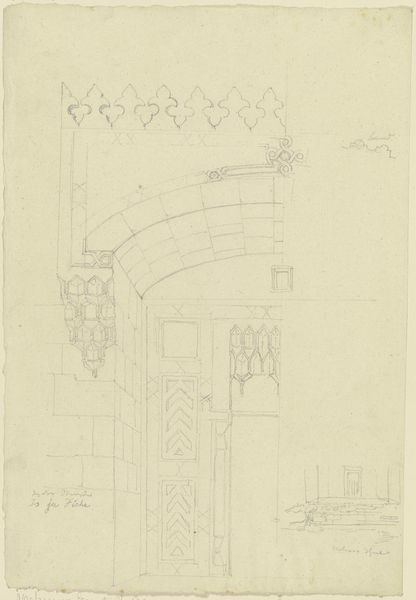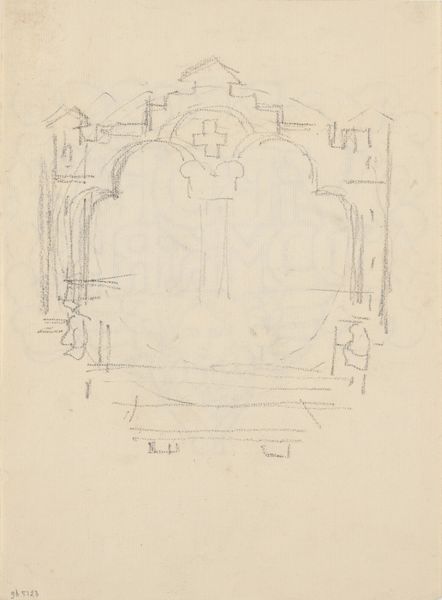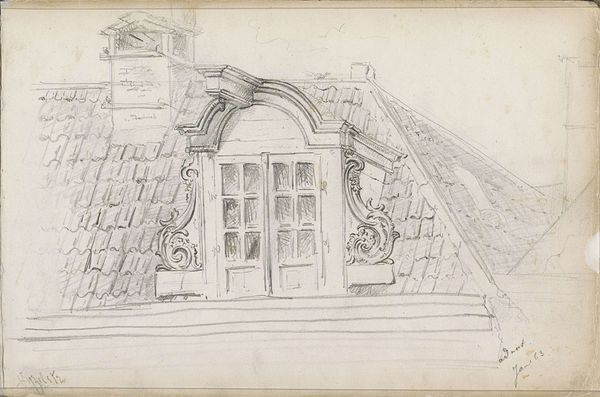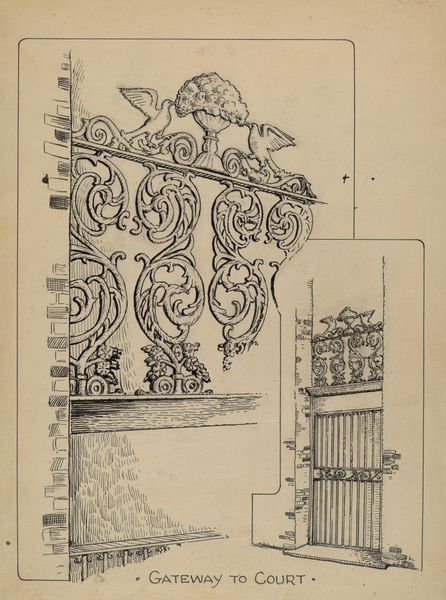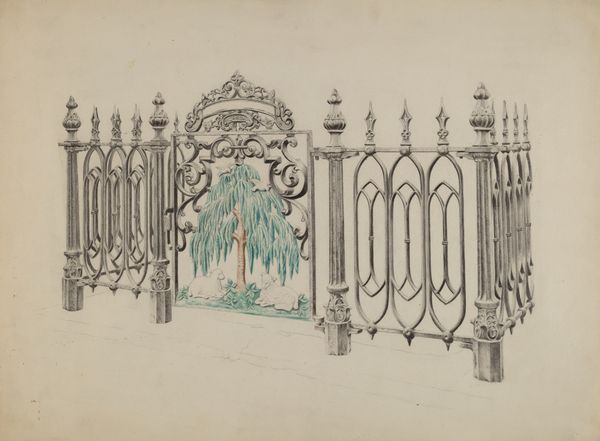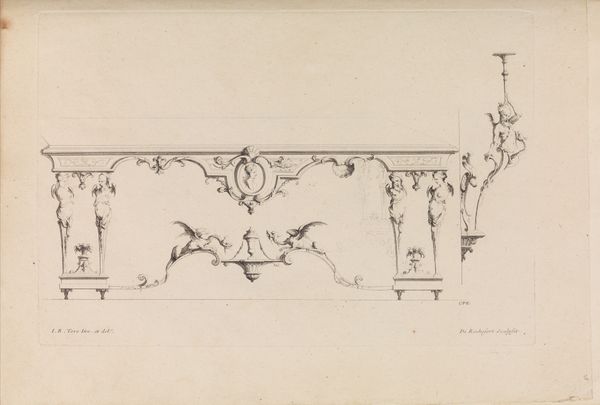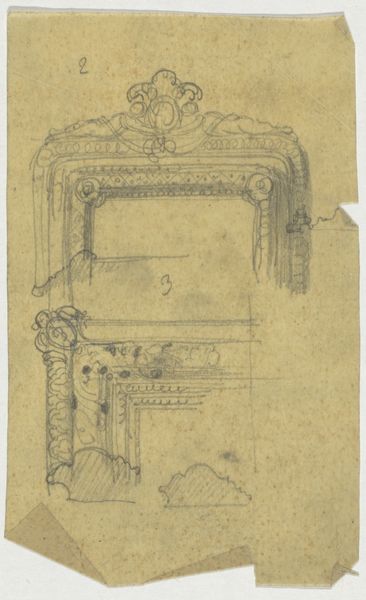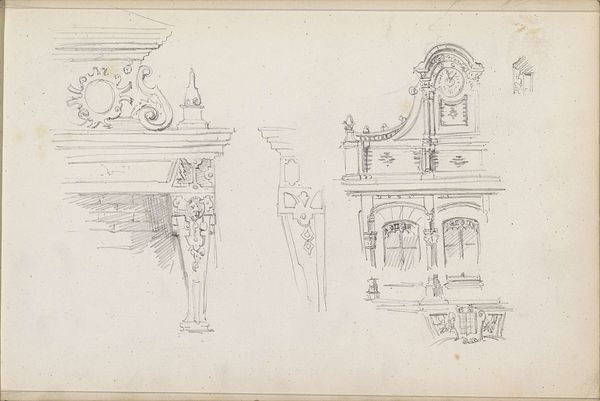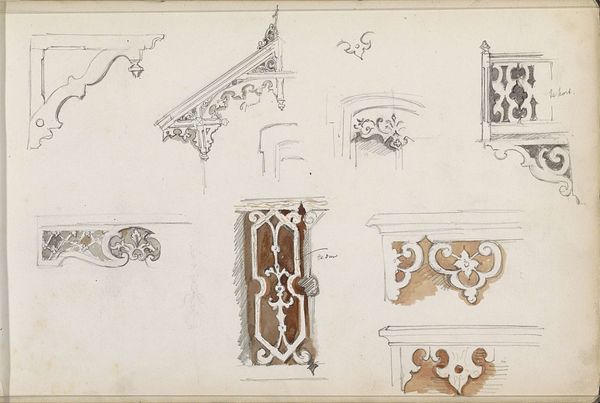
drawing
#
drawing
#
perspective
#
line
#
cityscape
Dimensions: overall: 28.4 x 27.4 cm (11 3/16 x 10 13/16 in.)
Copyright: National Gallery of Art: CC0 1.0
Curator: Look at this evocative drawing by Lucien Verbeke, created around 1936, entitled "Iron Balcony". The medium here is drawing, focusing on linear qualities. Editor: Immediately, the meticulous details of the ironwork juxtaposed with the skyline creates a poignant atmosphere, a sense of confinement but also openness to the world. It feels somber. Curator: Indeed. It encapsulates the intricate relationship between private and public spaces. Balconies throughout history can be associated with themes of display, performance, surveillance. In what ways do you feel it engages the viewer with questions of urban spectatorship and power? Editor: Well, look at the workmanship – it seems the iron was formed rather decoratively. You can imagine the blacksmith carefully considering its creation, for who might be looking. Was it for prestige or status in the town perhaps? And whose gaze from which vantage point does this invoke in the viewer? The craftsmanship speaks to this labor. Curator: It does offer a very compelling vision of early 20th-century class divisions through that perspective. Think about how the elaborate design of the balcony contrasts with the simple, almost stark lines of the cityscape beyond, especially considering how balconies in the past functioned as literal stages for gendered performances. Editor: Precisely! This piece seems deeply entrenched in production and what someone sees as 'view worthy' based on their context. And again, its labor has a value too. Curator: I also can't help but feel the cityscape offers another perspective in terms of rapid urbanization and industrial development too during this time. Editor: Yes. There are smoking chimneys that look like industrial factories with very linear housing, but juxtaposed with more classical elements that also remind us of class separation. How curious that we see this view, both literally and figuratively, through Verbeke's architectural framing device. Curator: Verbeke uses that device quite well to question the function of viewing altogether through line drawing. This provides such rich insight when thinking about modern architecture as both private refuge and societal observation, wouldn't you agree? Editor: Yes. A quiet rebellion, framed through ornate labor... Very potent.
Comments
No comments
Be the first to comment and join the conversation on the ultimate creative platform.


